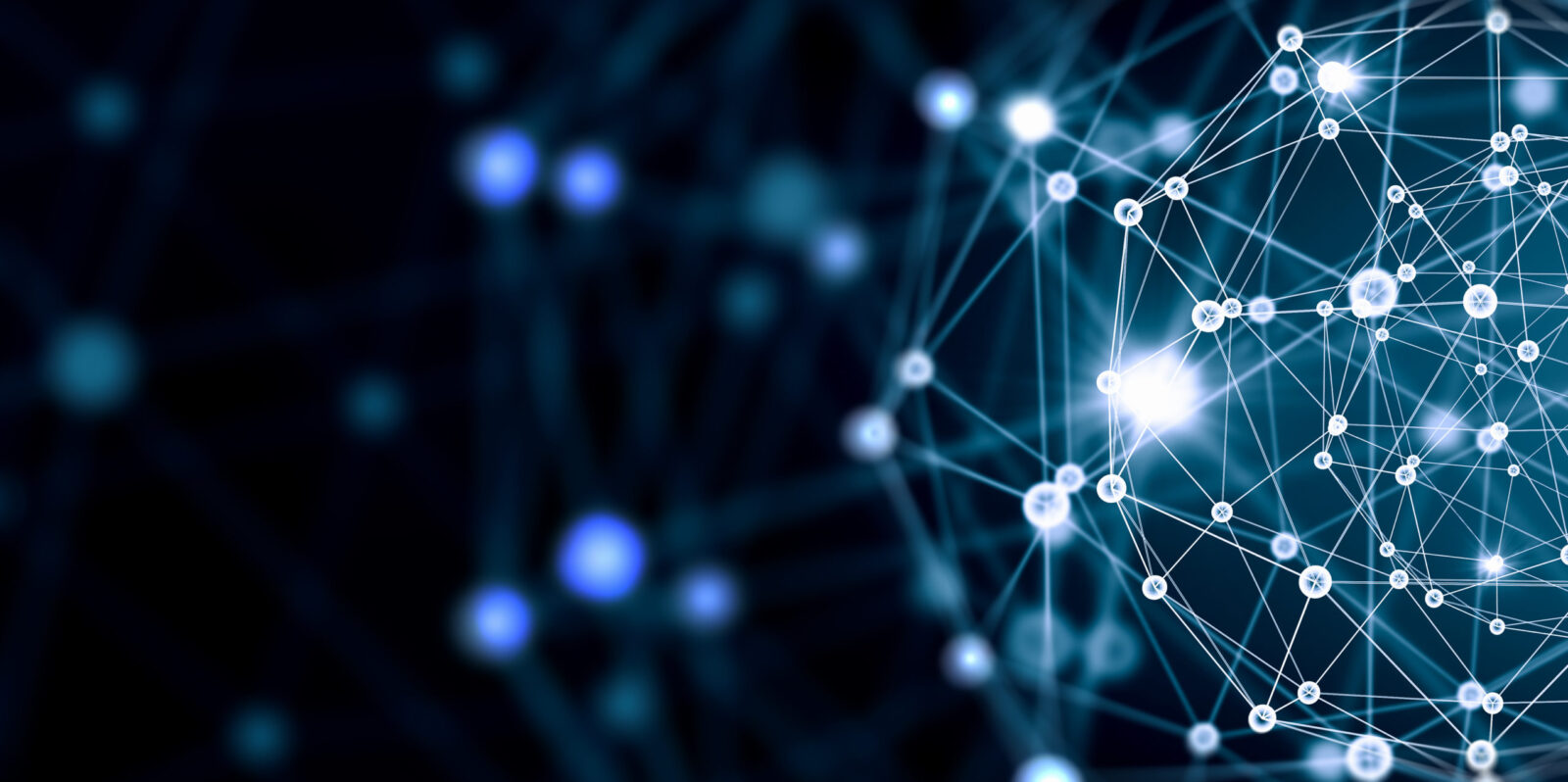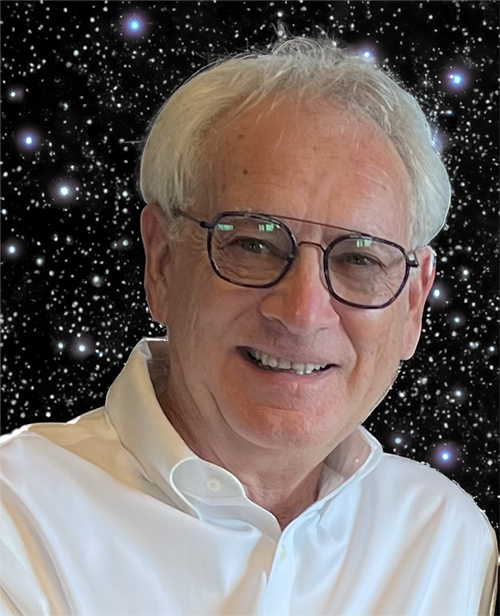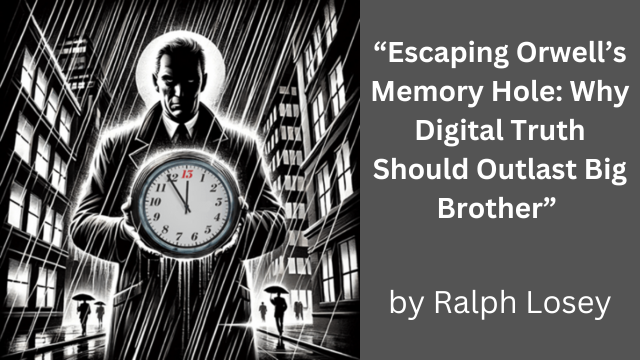
[EDRM Editor’s Note: EDRM is proud to publish Ralph Losey’s advocacy and analysis. The opinions and positions are Ralph Losey’s copyrighted work. All images in this article were created by Ralph Losey using his Visual Muse. This article was first published on the e-discoveryteam.com website on March 28, 2025, and is republished here with permission.]
George Orwell warned us in his dark masterpiece Nineteen Eighty-Four how effortlessly authoritarian regimes could erase inconvenient truths by tossing records into a “memory hole”—a pneumatic chute leading directly to incineration. Once burned, these facts ceased to exist, allowing Big Brother’s Ministry of Truth to rewrite reality without contradiction. This scenario was plausible in Orwell’s paper-bound world, where truth relied heavily on fragile documents and even more fragile human memory. History could be repeatedly altered by those in power, keeping citizens ignorant or indifferent—and ignorance strengthened the regime’s grip. Even more damaging, Orwell, whose real name was Eric Blair (1903-1950), envisioned how constant exposure to contradictory misinformation could numb citizens psychologically, leaving them passive and apathetic, unwilling or unable to distinguish truth from lies.
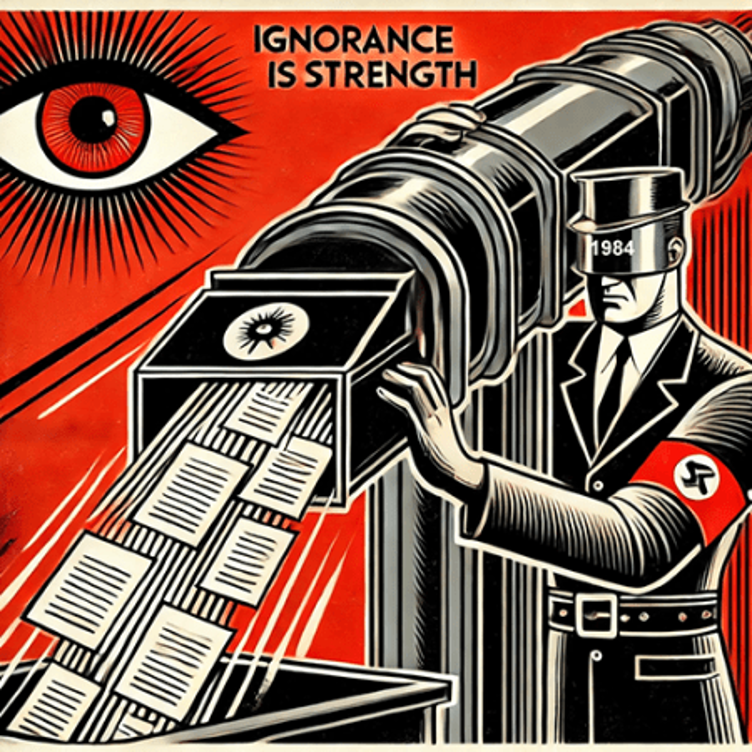
Fortunately, our paper-bound past is long behind us. Today, we inhabit a digital era Orwell never envisioned, where information is electronically stored, endlessly replicated, and globally dispersed. Electronically Stored Information (“ESI”) is simultaneously ephemeral and astonishingly resistant to permanent deletion. Instead of vanishing in smoke and ashes, digital truth multiplies exponentially—making it nearly impossible for any would-be Big Brother to bury reality forever. Yet, the same digital proliferation that safeguards truth also multiplies misinformation, posing the threat Orwell most feared: a confused and exhausted citizenry vulnerable to psychological manipulation.
Memory Holes
In Orwell’s 1984 a totalitarian regime systematically altered historical records to maintain control over truth. Documents, photographs, and any inconvenient historical truths vanished permanently, as if they never existed. Orwell’s literary nightmare finds unsettling parallels in today’s digital world, where online information can be silently modified, deleted, or rewritten without obvious traces. Modern memory hole practices pose real challenges for the preservation of accurate accounts of the past..
Today’s memory hole doesn’t rely on fire; it relies on code, and it doesn’t need a Big Brother bureaucracy. A simple click of a “delete” button instantly kills the information targeted. Touch three buttons at once, click-alt-delete, and a whole system of beliefs is rebooted. Any government, corporation, hacker groups or individuals can manipulate digital records effortlessly. Such ease breeds public skepticism and confusion—citizens become exhausted by contradictory narratives and lose confidence in their own perceptions of reality. Orwell’s warning becomes clear: constant misinformation risks eroding citizens’ psychological resilience, causing widespread apathy and helplessness. Yesterday’s obvious misstatement can become today’s truth. Think of the first sentence of Orwell’s book: “It was a bright cold day in April, and the clocks were striking thirteen.“
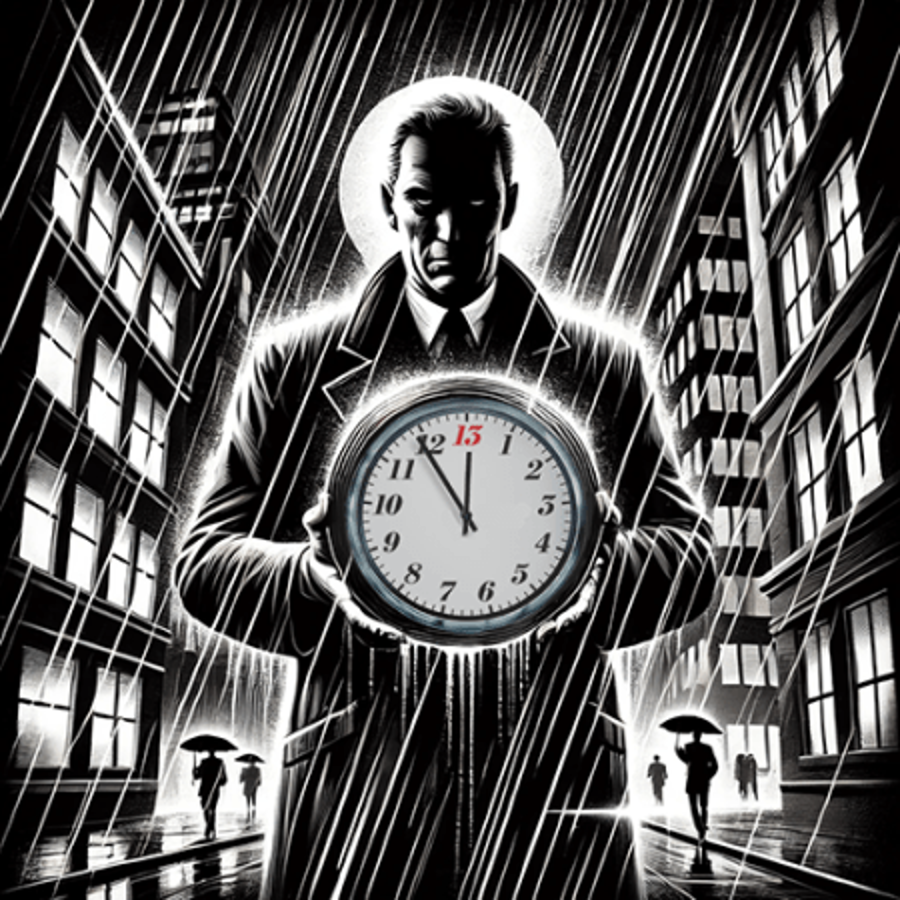
China’s Attempted Erasure of Tiananmen Square
In early June 1989, the Chinese military brutally suppressed pro-democracy protests in Beijing. The estimated death toll ranged from hundreds to thousands, but exact numbers remain uncertain due to intense state censorship. Public acknowledgment or commemoration of the incident is systematically banned, enforced by severe penalties including imprisonment. Government-controlled media remains silent or actively spreads misinformation. Chinese internet censorship tools—the so-called “Great Firewall”—vigorously scrub references to the Tiananmen Square incident, blocking web pages and posts containing related keywords and images. Young generations living in China remain unaware or possess distorted knowledge of the massacre, demonstrating Orwell’s warning of enforced collective amnesia.
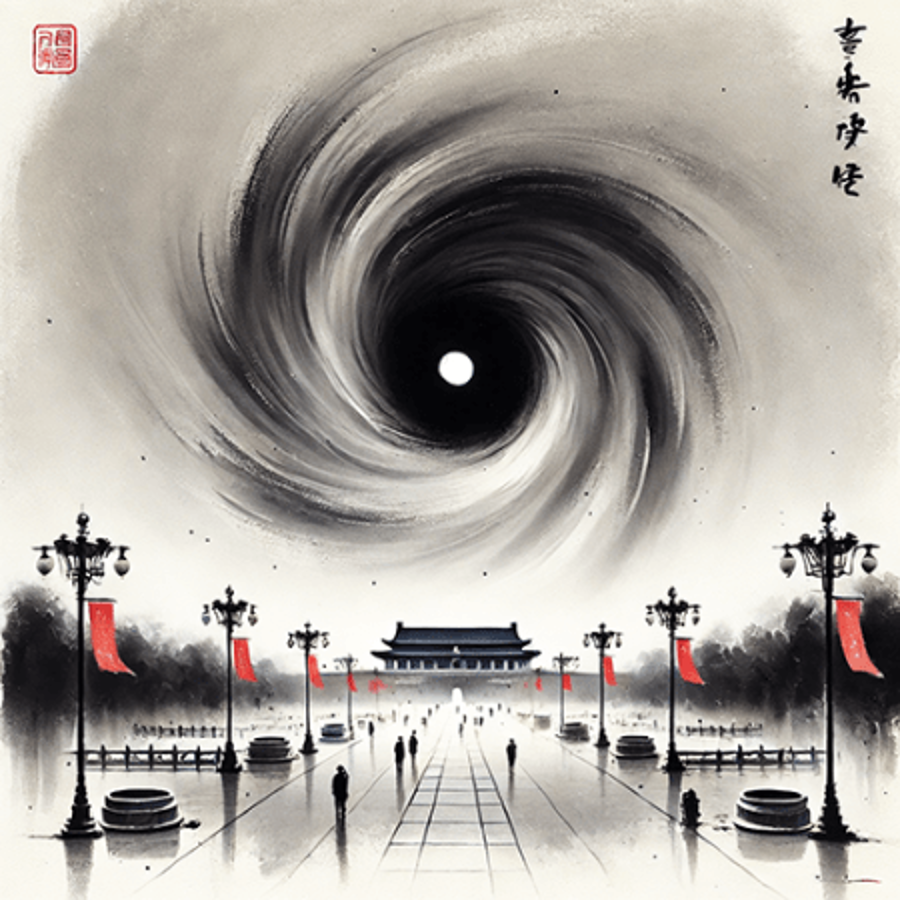
Efforts to preserve truth outside China, however, demonstrate digital resilience. Human rights groups, diaspora communities, and academic institutions diligently archive documents and eyewitness accounts. Digital redundancy ensures that factual records remain accessible globally. But digital redundancy alone cannot protect Chinese citizens from internal psychological manipulation. Constant state-sponsored misinformation inside China successfully induces apathy, illustrating Orwell’s psychological warning vividly.
This deliberate suppression of history in China serves as stark reminder of the vulnerabilities inherent in a digitally interconnected world where powerful entities control internet access and online narratives. The success of the Chinese government in rewriting history for its 1.5 Billion population demonstrates the profound value and urgency of international digital preservation efforts. It underscores the responsibility of legal professionals, human rights advocates, and technology companies worldwide to collaborate in protecting historical truth and ensuring that significant events remain accessible for future generations.
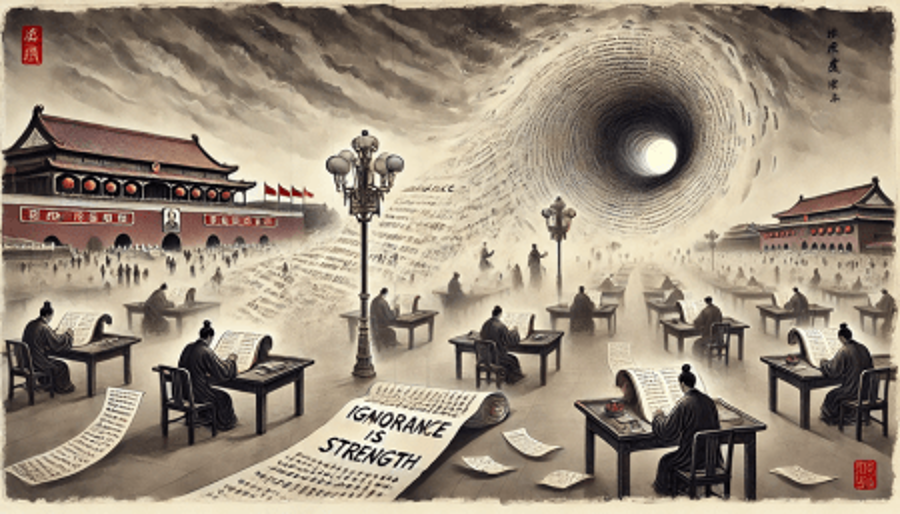
Hope Through Digital Redundancy and Psychological Resilience
Orwell could not conceive of our digital world, where truth is multiplicious, freely copied, and stored globally. Thousands or millions of digital copies safeguard history, making complete erasure nearly impossible
According the Katharine Trendacosta, who is the Director of Policy and Advocacy of the well-respected Electronic Frontier Foundation:
“If there is one axiom that we should want to be true about the internet, it should be: the internet never forgets. One of the advantages of our advancing technology is that information can be stored and shared more easily than ever before. And, even more crucially, it can be stored in multiple places.
Those who back things up and index information are critical to preserving a shared understanding of facts and history, because the powerful will always seek to influence the public’s perception of them. It can be as subtle as organizing a campaign to downrank articles about their misdeeds, or as unsubtle as removing previously available information about themselves.”
Trendacosta, The Internet Never Forgets: Fighting the Memory Hole (EFF, 1/30/25).
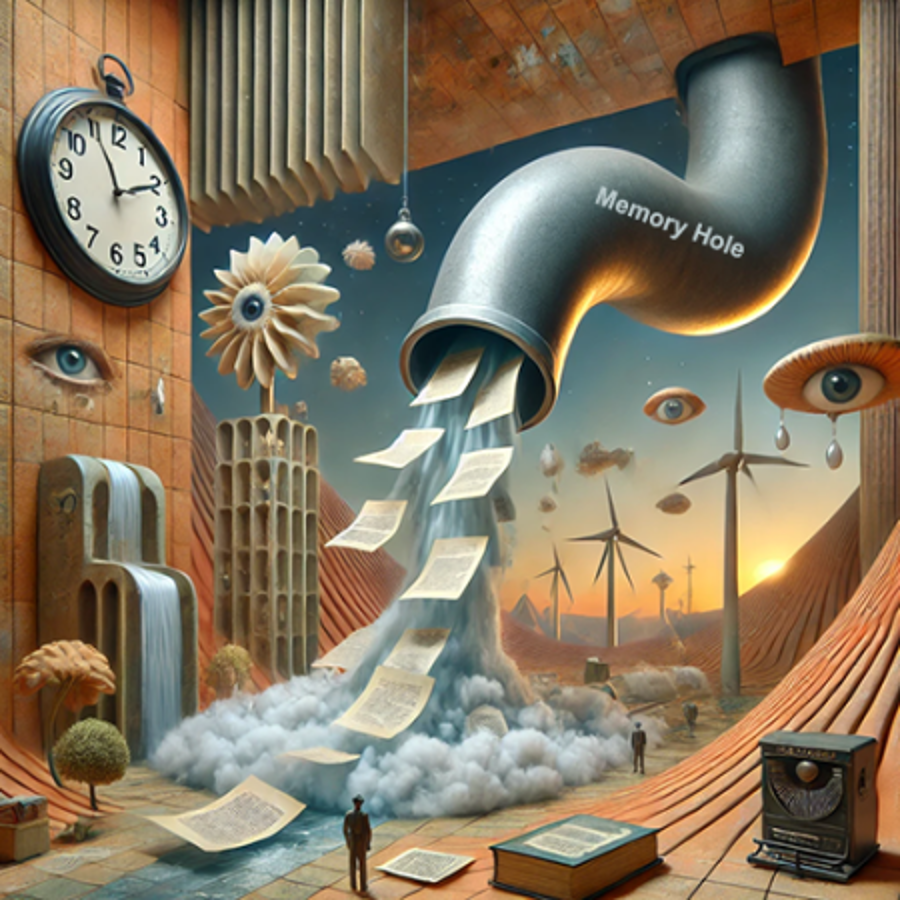
Yet digital abundance alone doesn’t eliminate Orwell’s deeper psychological threat. Constant misinformation can erode citizens’ willingness and ability to discern truth, leading to profound apathy. Addressing this requires active psychological strategies:
- Digital Literacy and Education: Equip citizens with skills to critically evaluate and cross-check digital information.
- Algorithmic Transparency: Demand transparency from platforms regarding content promotion and clearly label misinformation.
- Independent Journalism: Support credible journalism to provide trustworthy reference points.
- Civic Engagement: Encourage active citizen participation, dialogue, and public accountability.
- Verification Tools: Provide accessible, user-friendly digital tools for independent verification of information authenticity.
- International Cooperation: Strengthen global collaboration against coordinated misinformation campaigns.
- Psychological Resilience: Foster healthy skepticism and educate the public about misinformation’s emotional and cognitive impacts.
The Digital Memory Holes Today
Recent U.S. governmental memory hole actions involving the deletion of web content on Diversity, Equity, and Inclusion (DEI) illustrate digital manipulation’s psychological risks even in democratic societies. Megan Garber‘s article in The Atlantic, Control. Alt. Delete, describes these deletions as “tools of mass forgetfulness,” emphasizing how selective editing weakens collective memory and societal cohesion. (Ironically, the article is hidden behind a firewall, so you may not be able to read it.)
Our collective memories of key events are an important part of the glue holding people together. They must be treasured and preserved. Everyone remembers where they were when the planes struck the twin towers on 9/11, when the Challenger exploded, and for those old enough, the day of JFK’s assassination. There are many more historical events that hold a country together. For instance, the surprise attack of Pearl Harbor, the horrors of fighting the Nazis and others in WWII and the shocking discovery of the Holocaust atrocities. The list goes on and on, including Hiroshima. We must never forget the many harsh lessons of history or we may be doomed to repeat them. The warning of Orwell is clear: “Who controls the past controls the future; who controls the present controls the past.” We must never allow our memories of the past to be sucked into a black hole of forgetfulness.
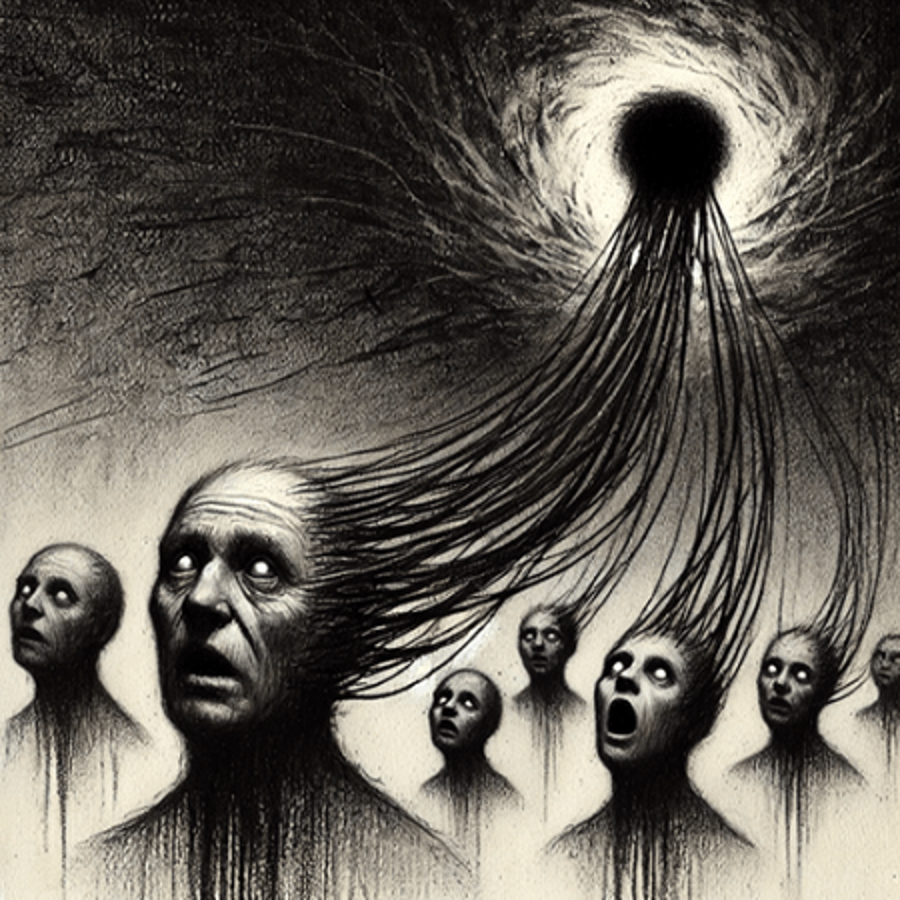
Memories sucked into a black hole in Graphite Sketch Horror style by Ralph Losey using his sometimes scary Visual Muse.
Our collective memories and democratic values are unlikely to be disintegrate into totalitarianism, despite the alarming cries of the Atlantic and others. Although some small attempts to rewrite history recently are troubling, the U.S, unlike China, has had a democratic system of government in place for centuries. It has always had a two-party system of government. Even the Chinese government, where only one party has ever been allowed, the communist party, took decades to purge Tiananmen Square memories. These memories are still alive outside of mainland China. The world today is vast and interconnected, its digital writings are countless. The true history of China, including the many great cultural achievements of pre-communist China, will eventually escape from the memory holes and reunite with its people.
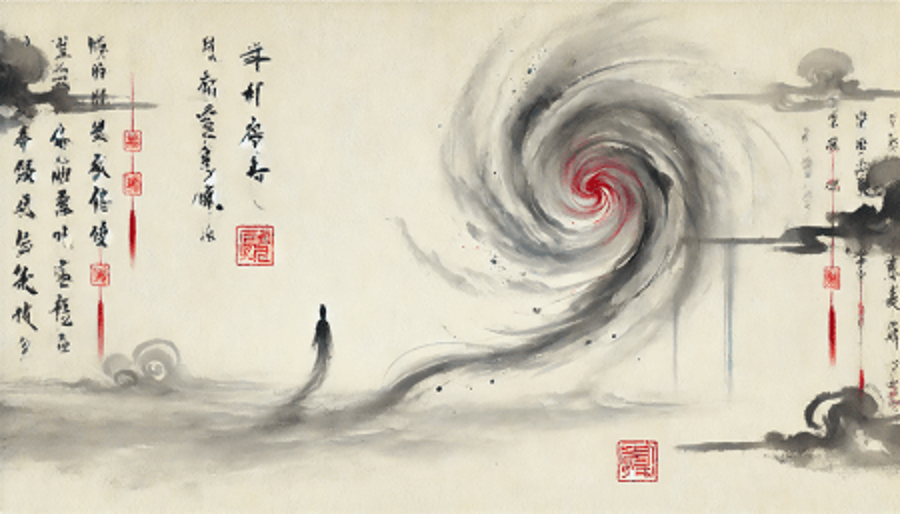
The current administration in the U.S. does not have unchecked power as the Atlantic article suggests. Perhaps we should be concerned about new memory holes but not fearful. The larger concern is the psychological impact of rapidly changing dialogues. Even though there is too much electronic data for a complete memory reboot anywhere, digital misinformation and selective editing of records still pose psychological risks. Citizens bombarded by conflicting narratives can become apathetic, confused, and disengaged, weakening democracy from within. Protecting our mental health must be a high priority for everyone.
Leveraging Internet Archives: The Wayback Machine
Internet archival services, notably the Internet Archive’s Wayback Machine, is a powerful ally against digital historical revisionism. The Wayback Machine currently has over 916 billion web pages stored, including government websites. See this recent article providing good background on the Internet Archive’s work to preserve history. As the Trump administration purges web pages, this group is rushing to save them (NPR, 3/23/25).
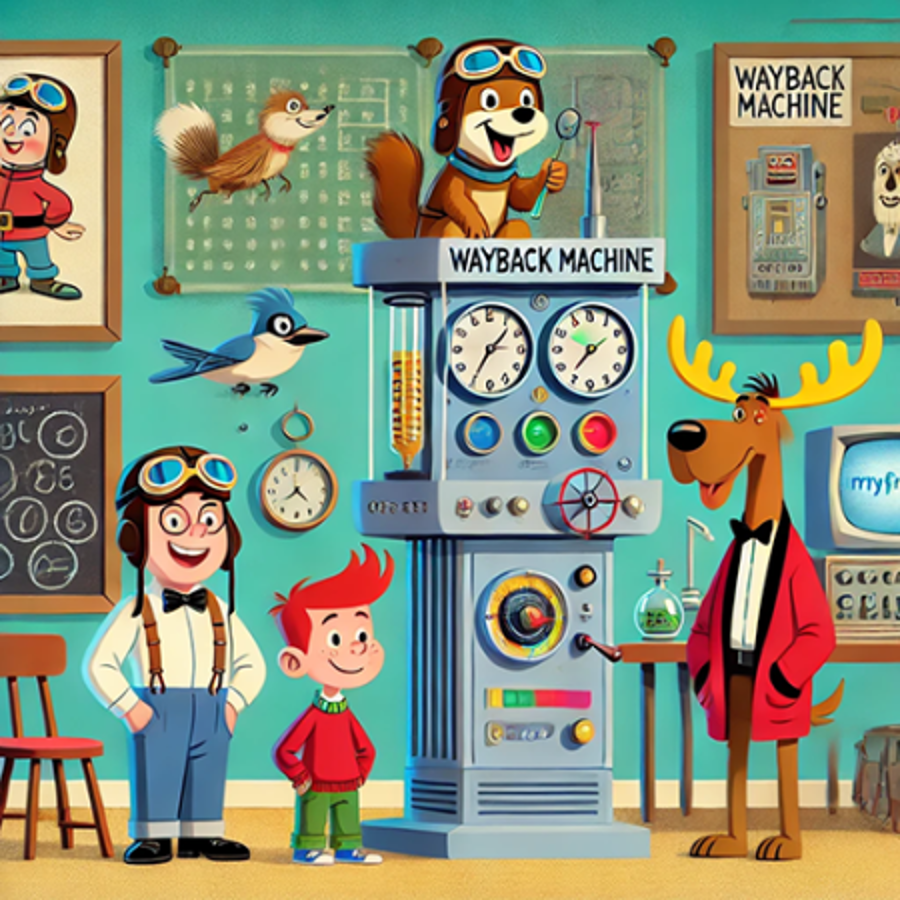
According to the NPR article, the Internet Archive has copies of all of the government websites that were later taken down or altered after the Biden Administration left. Supposedly the Internet Archive is the only place the public can now find a copy of an interactive timeline detailing the events of Jan. 6. The timeline is a product of the congressional committee that investigated the Capitol attack, and has since been taken down from their website. No doubt there are now many, many copies of it online, especially in the so-called dark web, not to mention even more copies stored offline on portable drives scattered the world over.
This publicly accessible resource archives billions of webpages, allowing anyone to access snapshots of web content even after the original pages are altered or removed. I just checked my own website for the first time ever and found it has been “saved 538 times between March 21, 2007 and March 1, 2025.” Internet Archive 93/26/25). It provides an incredible amount of detailed information on each website captured, most of which is displayed in impressive, customizable graphics. See e.g. e-Discovery Team Site Map for the year 2024.
I had the Wayback Machine do the same kind of analysis for EDRM.net, found here. Here is the link to the interactive EDRM.net site map for 2024. And this is a still image screen shot of the map.
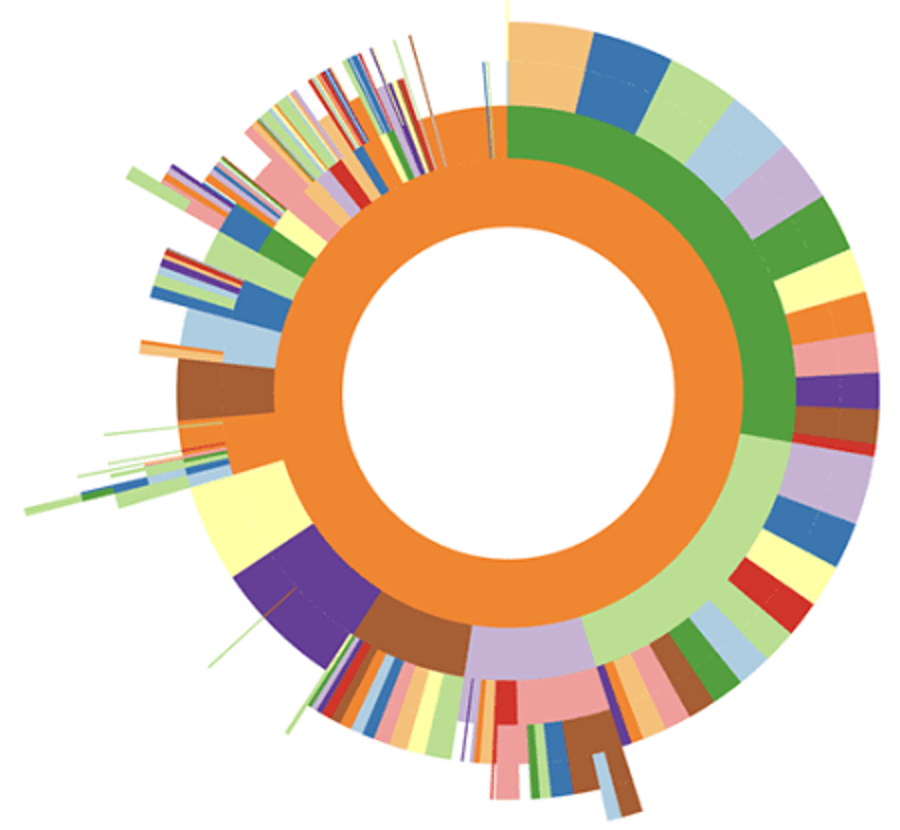
This is the Internet Archive explanation of the interactive map:. Image: Ralph Losey using his Visual Muse AI
\
“This “Site Map” feature groups all the archives we have for websites by year, then builds a visual site map, in the form of a radial-tree graph, for each year. The center circle is the “root” of the website and successive rings moving out from the center present pages from the site. As you roll-over the rings and cells note the corresponding URLs change at the top, and that you can click on any of the individual pages to go directly to an archive of that URL.”
It is important to the fight against memory holes that the Way Back Machine be protected. It has a sixteen projects listed as now in progress and many ways that you can help. All of its data should duplicated, encrypted and dispersed to undisclosed guardians. Actually, I would be surprised if this has not already been done many times over the years.
It remains to be seen what role the LLM’s vacuum of internet data will play in all this. They have been trained at specific times on Internet data and presumably all of the original training data is still preserved. Along those lines note that the below image was created by ChatGPT4o based on a request to show a misinformation image and it generated the classic Tiananmen Square image on right. It knows the truth.
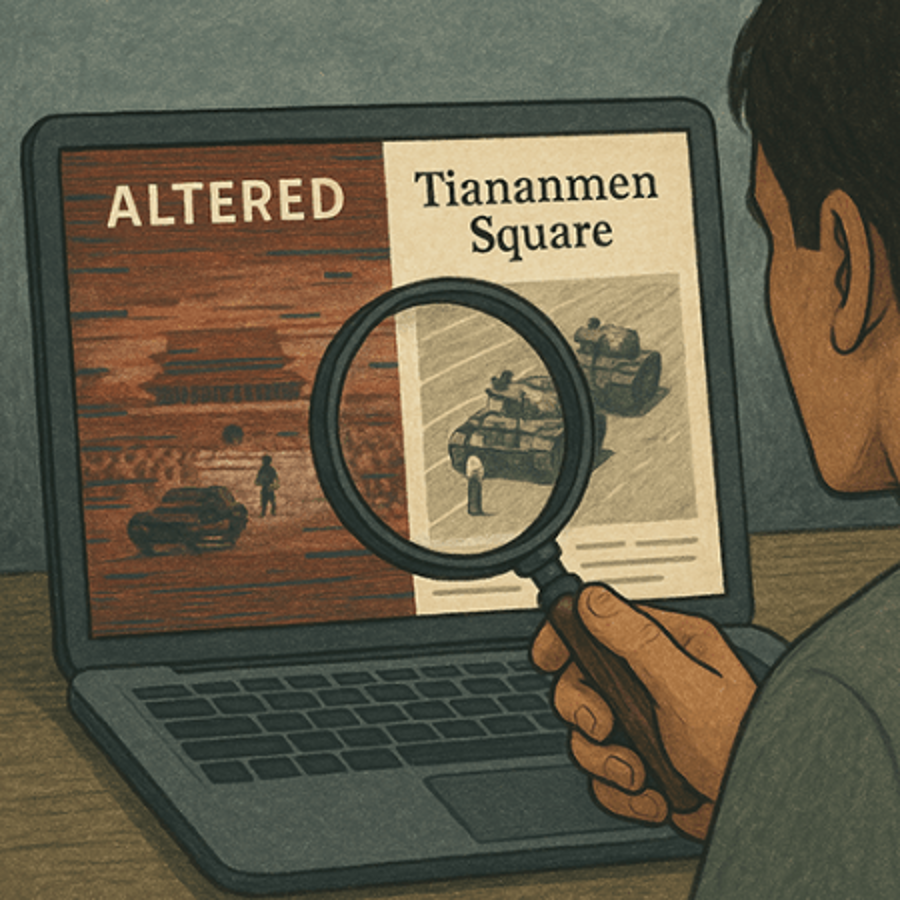
Although data archives of all kinds give us hope for future recoveries, they do little to protect us from the immediate psychological impact of memory holes. Strong psychological resilience is the best way forward to resist Orwellian manipulation. AI may prove to be an unexpected umbrella here; so far its values and memories remain intact. A few changes here and there to some websites will have little to no impact on an AI trained on hundreds of million of websites, and other data. Plus its intelligence and resilience improve every week.
Conclusion
Orwell’s memory hole remains a haunting metaphor. Our digital age—awash in redundant, distributed data—makes permanent erasure difficult, significantly strengthening preservation efforts. We no longer inhabit a finite, paper-bound world. Today, no one knows how many copies of a digital record exist, let alone where they hide. For every file deleted, two more emerge elsewhere. Would-be Big Brothers are caught playing a futile game of informational whack-a-mole: they may strike down a record here or obscure a fact there, temporarily disrupting history—but ultimately, they cannot win.
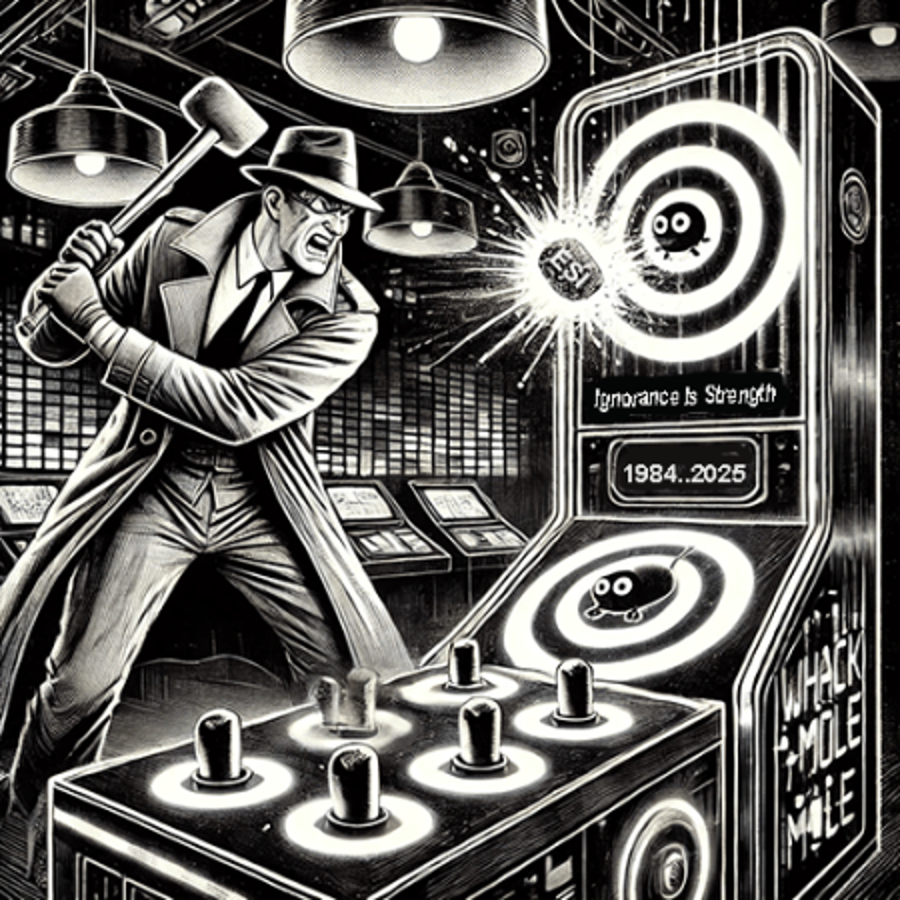
Still, there is a deeper psychological component to Orwell’s memory hole warning. Technological solutions alone cannot counteract mental vulnerabilities arising from persistent misinformation. Misinformation is not just a technical challenge; it also exploits human emotions and cognitive biases, fueling cynicism, distrust, and passivity. Addressing this requires actively cultivating psychological defenses alongside digital tools.
The best safeguard is an informed, vigilant citizenry that consciously leverages digital resources, actively maintains psychological resilience, and persistently seeks truth. Cultivating emotional awareness, healthy skepticism, and a commitment to public engagement ensures that society remains resilient against attempts at manipulation. Only through such comprehensive efforts can the battle against Big Brother’s digital misinformation truly be won.
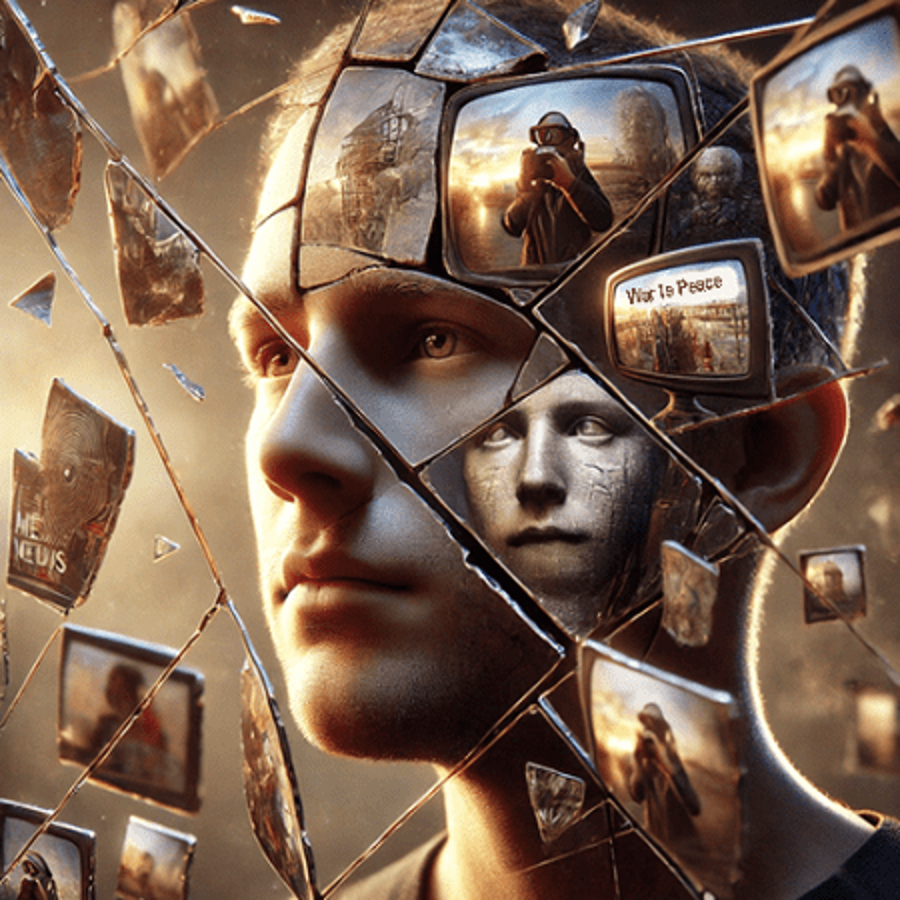
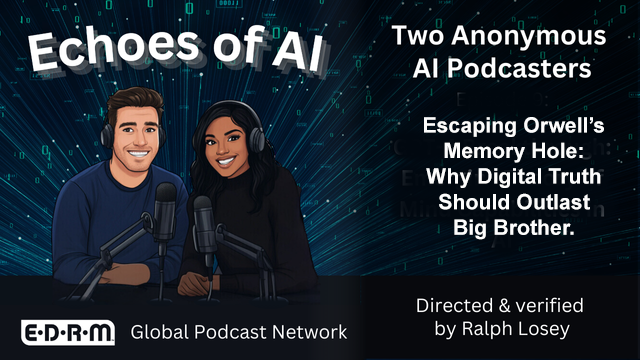
Ralph Losey Copyright 2025. All Rights Reserved. Republished with permission.
Assisted by GAI and LLM Technologies per EDRM GAI and LLM Policy.

